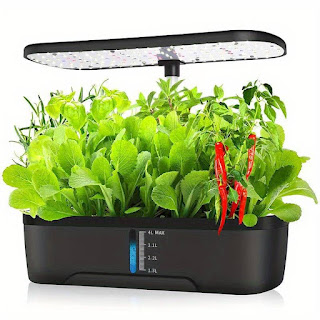In April of 2023, CBS published a short documentary titled "Eating Trash: The Chefs Turning Food Waste Into Trendy Eats." The documentary involves Adam Yamaguchi visiting different restaurants that are utilizing discarded remains of food (leftovers) that have yet to be cooked and serving them in dishes in their restaurants.
Throughout this 22 minute video you can listen to various restaurant owners talk about sustainability, food scarcity, the impact of wasted food on climate change, and how they believe they are making a difference. Only one of the establishments in the documentary was an actual non-profit; the rest appeared to be middle to upscale restaurants.
 |
| 'La Soupe,' a non-profit in Cincinnati, OH |
The restaurants and non-profit included in this documentary are undoubtedly making an impact on the amount of waste food in the world. But the majority of these establishments were for-profit and converting something which was once free (as trash) into an something which has monetary value. Considering how expensive restaurants are compared to grocery stores, it is possible that for-profit 'food upcycling' has the potential to actually increase food scarcity and inequality without proper controls.
This dynamic shows us something ugly about waste: It's really, really hard to get rid of it for free.
At 4:44 in the documentary, a literal pie-chart shows the proportion of food waste coming from different sources. The single largest source of food waste in the United States was "Residential" at 54.5% with 43.6 Million tons wasted. The restaurants and non-profits in this documentary were primarily getting their food scraps from other restaurants or food distributors discarding products that were past their sell-by date as opposed to whether or not the food was actually expired. Food service was at a substantially lower 16% and 12.8M Tons out of all waste.
Large scale operations like 'La Soupe' featured in the documentary have the potential to make a real difference in their communities by tackling food scarcity head-on. But a large operation creates an equally large expense, and a non-profit by its very nature has its growth limited by the generosity of donors, whether private or public.
If you consider the cost and feasibility for the average household to preserve their scraps for non-profits, or upcycle their own leftovers, you now have one of the largest logistics problems in the United States. As stated in the documentary, in 2021 alone 43.6 million tons of food were wasted in the United States by residential sources. Any measurable decrease in this figure automatically means moving millions of tons of unwanted food into the hands of those who really need it. This means that for every United States Household, additional resources have to be spent preserving, transporting, and storing food scraps. Additionally, the bad habits of billions of United States residents have to be changed, which is another massive operational effort on the education and public service front.
Is there a solution in sight? In Portland Oregon, one service that could be the seed of a more sustainable future is the PDX Free Fridge project:
 |
| PDX Free Fridge: Blue Icons are non-refrigerated pantries, purple icons are refrigerated storage |
One possible solution may involve projects like PDX Free Fridge. If these services were proliferated and supported by a city service similar to a trash service, while simultaneously incentivizing participation, then it could become easier to get otherwise wasted food to those in need.
Interested in donating unwanted food that is still good to eat? You can visit the PDX Free Fridge website below to find a fridge or pantry near you.













